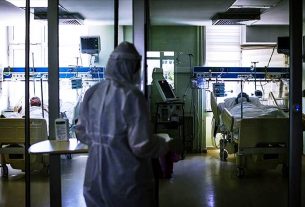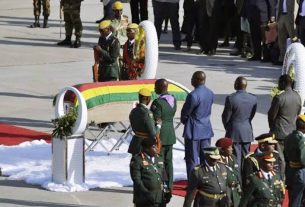Sun 24 September 2023:
After a thrilling seven-year, four-billion-mile journey, a saucer-shaped capsule carrying asteroid fragments that may contain information about the formation of the solar system slammed into Earth’s atmosphere on Sunday. The capsule then dropped to an on-target parachute-assisted descent in Utah.
Only minutes away from landing! The #OSIRISREx main parachute has deployed at about 5,050 feet (1540m) to slow down the speed of the sample capsule. pic.twitter.com/2XzvRMKshz
— NASA (@NASA) September 24, 2023
The capsule made a fiery final descent through the atmosphere of the Earth as expected with the samples collected from asteroid Bennu and parachuted into the Utah desert of the United States.
After traveling for over 4 billion miles (6.2 billion kilometers) to reach Bennu and then make the journey home, the OSIRIS-REx probe released its sample return capsule this morning while it was about 63,000 miles (101,000 km) above Earth. The capsule contains some 250 grams (8.8 ounces) of rocks and other material from Bennu, material that could help answer some of scientists’ most burning questions about the origins of life on Earth and the early days of our solar system.
TOUCHDOWN! The #OSIRISREx sample capsule landed at the Utah Test and Training Range at 10:52am ET (1452 UTC) after a 3.86-billion mile journey. This marks the US’s first sample return mission of its kind and will open a time capsule to the beginnings of our solar system. pic.twitter.com/N8fun14Plt
— NASA (@NASA) September 24, 2023
“Touchdown for science!” said Jim Garvin, chief scientist of NASA’s Goddard Space Flight Center, from the landing site during a live broadcast. “For the first time in history, we brought goodies back home from this kind of object. This is so hige and we’re all breathing a big sigh of relief.”
Scientists have been hopeful about the sample and have said that it is likely to provide them with more information about the solar system and how Earth turned into a habitable place.
The probe, which was launched in 2016, landed on the asteroid Bennu after four years and was able to collect around nine ounces (250 grams) of dust from the asteroid’s rocky surface.
After a journey of nearly 3.9 billion miles, the #OSIRISREx asteroid sample return capsule is back on Earth. Teams perform the initial safety assessment—the first persons to come into contact with this hardware since it was on the other side of the solar system. pic.twitter.com/KVDWiovago
— NASA (@NASA) September 24, 2023
NASA Administrator Bill Nelson said that even the small amount of sample should “help us better understand the types of asteroids that could threaten Earth” and cast light “on the earliest history of our solar system.”
“This sample return is really historic. This is going to be the biggest sample we’ve brought back since the Apollo moon rocks were returned to Earth,” said NASA scientist Amy Simon, while speaking to AFP.
Precious cargo 🚁
The #OSIRISREx asteroid sample hitches a ride on a helicopter. The next stop is a clean room here in Utah. It will eventually make its way to @NASA_Johnson for scientific analysis. pic.twitter.com/pP6ZHVtTXg
— NASA (@NASA) September 24, 2023
NASA to announce results of the test on October 11
The capsule was released by Osiris-Rex early on Sunday, from an altitude of more than 67,000 miles (108,000 kilometres), around four hours before its landing.
After the tire-sized capsule touched down in Utah, it was placed in a net by a team in protective masks and gloves from where it was airlifted by helicopter to a temporary “clean room” nearby.
Your package has been delivered.
The #OSIRISREx sample return capsule containing rock and dust collected in space from asteroid Bennu has arrived at temporary clean room in Utah. The 4.5-billion-year-old sample will soon head to @NASA_Johnson for curation and analysis. pic.twitter.com/Ke0PcDAKt0
— NASA (@NASA) September 24, 2023
The sample will be sent to NASA’s Johnson Space Center in Houston on Monday. The box will be opened by the specialists in another “clean room.”
The first results of the sample testing will be announced by NASA in a news conference on October 11.
SOURCE: INDEPENDENT PRESS AND NEWS AGENCIES
______________________________________________________________
FOLLOW INDEPENDENT PRESS:
TWITTER (CLICK HERE)
https://twitter.com/IpIndependent
FACEBOOK (CLICK HERE)
https://web.facebook.com/ipindependent
Think your friends would be interested? Share this story!





